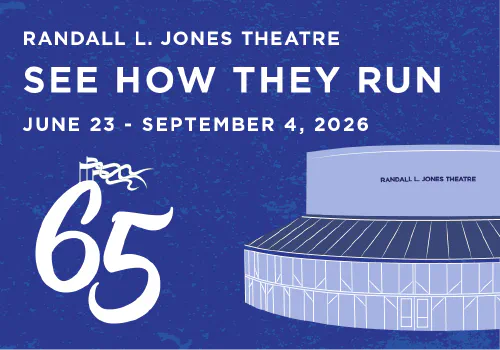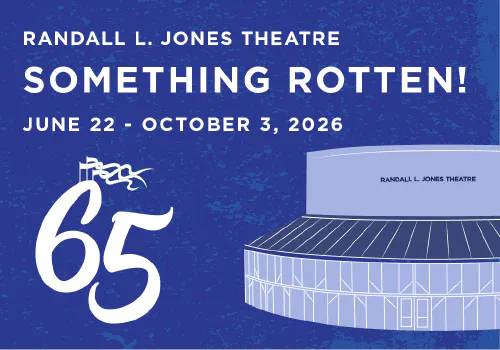By Don Leavitt
In William C. Young’s *Famous Actors and Actresses on the American Stage,*Sir Laurence Olivier is quoted as saying, “Acting is illusion, as much illusion as magic is, and not so much a matter of being real” ([New Providence: R.R. Bowker LLC, 1975], 885). Acting is, essentially, make-believe, the art of telling a story by presenting, or representing, a world that does not, in fact, exist, yet mimics reality. The illusion, then, is the sum of all the individual parts, from the performances of the actors to their costumes, the sets, and all of the other components that contribute to the whole.
When it is well done, the effects can be intoxicating. In the biography, *Olivier,*by Terry Coleman ([New York: Henry Holt and Co. 2005], 416), the actor likens a performance in front of a live audience to the most intimate of human experiences. It is incredibly gratifying to know that you have performed well; that an audience has accepted you in a particular role; that they have laughed because of you, and cried because of you; that they have experienced love or hate for your character; that they have paid for the privilege and then cheered and applauded you. The feeling is difficult to replicate in other professions; small wonder that those who “catch the bug” find it so difficult to pursue alternative careers.
There is great emotional security in acting, as well. A friend once described it as an escape from the chaos of reality, in which the elements of a life are well controlled and well defined: human interactions and confrontations are choreographed; problems, conflicts and their solutions, or at least resolutions, are scripted and directed. Unlike real life, which is improvisation at its best (or worst), the actors in a play take comfort in knowing what to say and when; what’s going to happen next; and how the illusion they’ve created is going to end.
Protecting that illusion is perhaps the first law of theatre. From my earliest days as an actor, three inviolable rules were driven into my head: never break character; never peek out from behind the curtain; and never make noise backstage. Some of my fondest memories of rehearsals from my youth have me backstage, my fellow cast members and I talking and laughing while an exasperated director, desperate to move the rehearsal along, shouts from the house, “Quiet in the wings!”
The fact is it’s a very different world backstage, where the chaos of real life stands in stark contrast to the scripted illusion taking place out front. Backstage, you’ll find all of the behind-the-scenes rigors of a theatrical production—sets need to be moved, costumes changed, props taken and replaced—mixed with the very human trappings of the people involved, including egos, nerves, stresses, and personal dramas. A good stage manager can control the chaos, and, indeed, the professionalism of a cast and crew can often be determined best by how they behave off-stage rather than by how they perform onstage. Still, it is nothing short of a miracle that the chaos that reigns behind the curtain rarely bleeds into the performance.
It is exactly that contrast between real chaos and scripted order that attracted playwright Michael Frayn to the story that would become his hit farce, *Noises Off!*According to Frayn, the idea first occurred to him in 1970 while watching a production of his play, *Chinamen.*Standing backstage, Frayn says, “It was funnier from behind than in front and I thought that one day I must write a farce from behind” (Barbara K. Mehlman, *CurtainUp,*http://www.curtainup.com/noisesoff.html). The result is *Noises Off!,*the name of which is a theatre term that refers to commotion off-stage.
Theatre is a perfect setting for farce, which in modern texts is defined as a comic genre depending on elaborately contrived, often improbable plots, broadly drawn characters and physical humor. *Noises Off!*is actually a farce about a theatre troupe performing a farce—what Kevin J. Wetmore, Jr., a theatre arts professor at Loyola Marymount University, calls a “meta-farce.” In other words, the audience watches actors create an illusion of actors creating an illusion, and the play explores what happens to the illusion when the almost farcical chaos found backstage does intrude on the scripted farce onstage. The play becomes, according to British critic Michael Billington, “a very funny comment on the fragility of farce itself, where split-second timing and a calculated, well-rehearsed spontaneity can be blown apart by a missed entrance or a recalcitrant prop” (Michael Frayn: Critical Perspective, www.contemporarywriters.com/authors/?p=auth114#).
The farce-within-the-farce is called *Nothing On,*a fairly run-of-the-mill British comedy fraught with mistaken identities and sexual innuendo. The *Noises Off!*audience gets to see Nothing On at three different stages of its production: act one shows us a final dress rehearsal in complete disorder, and a frazzled director trying desperately to maintain control; act two takes us backstage of a performance halfway through the run, where the personal struggles of each company member threaten to disrupt the play; and act three moves us to the end of the run and a production of a play so plagued by chaos that it now only vaguely resembles the scripted play being attempted in the first two acts. As the production crumbles around them, the performers desperately cling to the illusion until the very last line: “When all around is strife and uncertainty, there’s nothing like a good old-fashioned plate of curtain!”
*Noises Off!*is beautifully constructed, and audiences respond enthusiastically to this chance to glimpse an accurate, albeit exaggerated representation of what’s really going on off-stage. However, to call this a behind-the-scenes exposé of live theatre is too simplistic; the real point of *Noises Off!*is the conflict between illusion and reality, and the comedy that can be found when chaos disrupts order. Audiences laugh at the absurdity of it all, and they laugh again when the disaster they know is coming finally, inevitably, occurs.
The madness works, of course, because of the fictional performers’ dedication to their craft. These are actors—perhaps not very good actors, but dedicated artistes nonetheless. These people love the theatre, and they act because they are driven by the exhilaration that can only come from being onstage, from the intimate connection they form with their audience. They desperately want to be successful, which for an actor means being liked by the audience, and it is very funny to watch them fail due to the obstacles they create for themselves. It is interesting to note that the real actors achieve the personal high spoken of by Olivier by playing characters for whom that same high remains always just out of reach.
The security actors feel onstage also eludes the fictional performers, whose insecurities become more evident as chaos disrupts illusion. Frayn himself spoke of this in his introduction to Frayn Plays: One, where he makes note of the fact that the actors in *Noises Off!*have “fixed the world” by learning roles and rehearsing responses. “The fear that haunts them is that the unlearned and unrehearsed—the great chaos behind the set, inside the heart and brain—will seep back on the stage. The prepared words will vanish; the planned responses will be inappropriate. Their performance will break down and they will be left in front of us, naked and ashamed” ([London: Methuen, 1985], xiv).
There is a magical moment in act three when it becomes apparent to the audience that the performance of Nothing On cannot be saved, and still the fictional performers soldier on, refusing to give in, refusing to abandon illusion. Even the frazzled director inserts himself into the mounting chaos in a vain attempt to salvage the illusion he thought he had created. In the end, the real performers of *Noises Off!*are secure in their knowledge that the chaos the audience has so graciously laughed at has, itself, been a well-scripted and orderly illusion.










